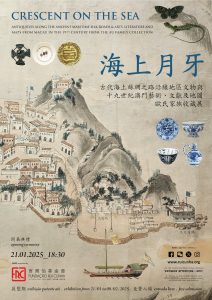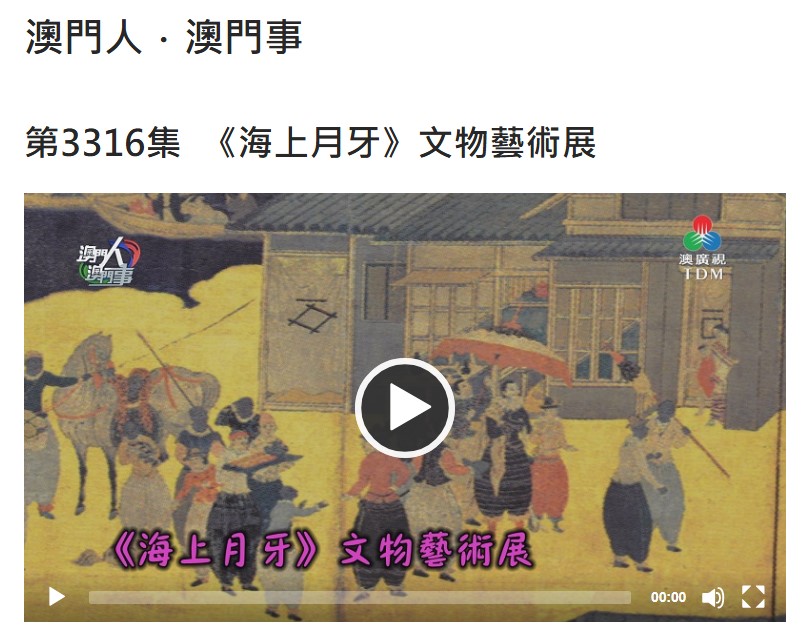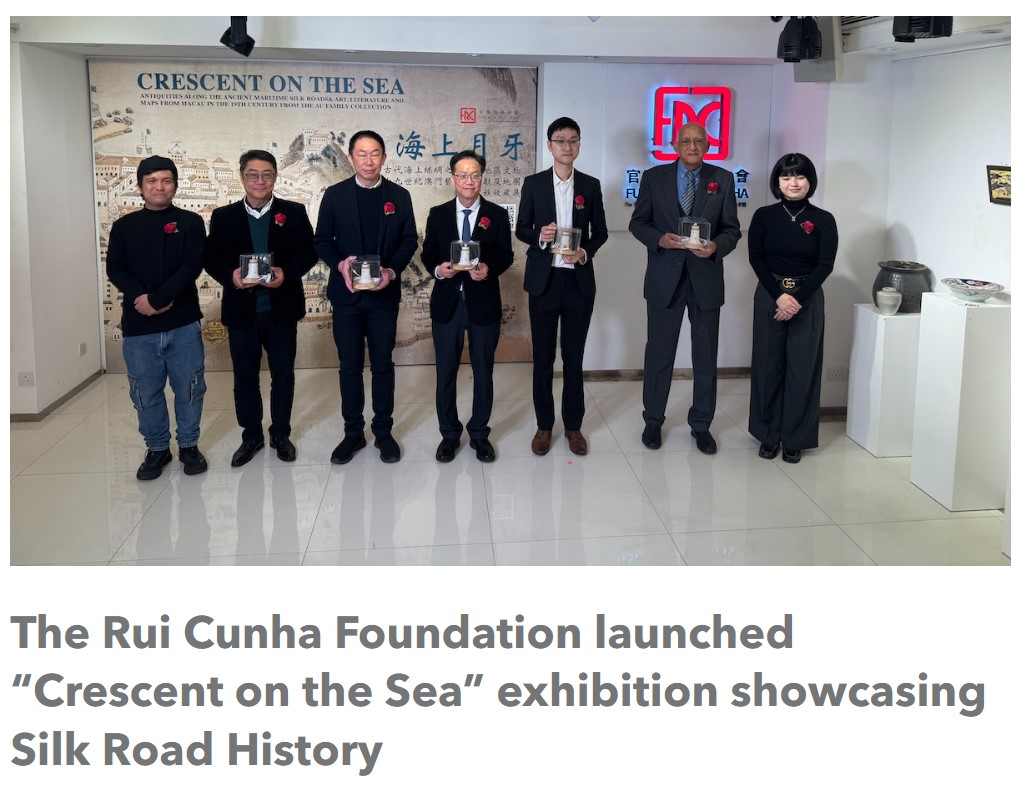Crescent on the Sea – 2025.01.21
The Rui Cunha Foundation opens on Tuesday, January 21st at 6:30 pm, the Maritime Silk Road Antiques Exhibition “Crescent on the Sea”, by collector Luis Au (歐路易), with approximately 50 works of art, ceramics, paintings, documents and books from the 4th to the 19th century, examples of objects traded and transported along China’s land and sea routes.
Co-organized by FRC and the Au Family Collection, the project aims to celebrate the 10th anniversary of the Silk Road land corridor between Chang’an (ancient Xi’an) and Tianshan (a mountain range that crosses the borders of China, Kazakhstan and Kyrgyzstan) inscription in the UNESCO World Heritage List in 2014; as well as the 20th anniversary of the Historic Centre of Macao inscription on the same UNESCO World Heritage List in 2005, making it the designated 31st World Heritage Site in the People’s Republic of China.
According to Luis Au, «my family started to collect antiques from China and Portugal since the 1950s with our great passion for the studies of history. After a century of work in Macau, a city with a rich combination of Eastern and Western cultures, my family, with a Sino-Portuguese cultural background, devoted itself to promoting the Macao cultural heritage education and the local ancient treasures and relics».
“Crescent on the Sea” is a title that refers to the famous crescent-shaped lake, a true oasis surrounded by numerous sand dunes in Dunhuang, in Gansu province, on the edge of the Gobi Desert. «Dunhuang was a major hub of the ancient Silk Road trade routes that crisscrossed the Eurasian landmass of East-West commerce», states the exhibition’s preface. But Luis Au adds that, «on the southeast coast of China, there was also a “Crescent” on the sea, an area full of prosperity and vibrancy linked with around one hundred other ports along the Maritime Silk Road. From Liujiagang (today’s Liuhe, Suzhou province) to Canton, a crescent-shaped area centered on Zayton (today’s Quanzhou) was a leading center for shipbuilding and the development of navigation technologies during the Song dynasty, and one of the largest ports in the of the world».
The Silk Road routes served principally to transfer raw materials, food, and luxury goods. Some areas had a monopoly on certain materials or goods: notably China, which supplied Central Asia, West Asia and the Mediterranean world with silk, but also porcelain, tea and spices. Many high-value trade goods were transported – by pack animals and river vessels – over vast distances and a string of different merchants, between the Chinese and Roman Empires, flourishing between the 6th and 14th centuries AD and remaining in use until the 16th century.
The Maritime Silk Road, still undergoing discussions for a UNESCO’s World Heritage List nomination, is believed to have been a coastal navigation circuit sailed between the ports of Quanzhou, in Fujian province, through the Taiwan Strait, to the port of Ningbo, in Zhejiang province, now one of the three busiest cargo ports in the world.
Macau, with its advantageous geographical location on the southern coast of China, developed from the 16th century onwards into a principal maritime trade port and an important hub for exporting Chinese commodities to the world. Chinese silk and porcelain, among other goods, were re-exported via Macau to Japan, Southeast Asia, Europe and even America. As such, Macau played a vital role in the development of the Maritime Silk Road, helping to expand the global trade network and facilitating mutual cultural exchanges between East and West.
The artworks will be on display until February 8th, 2025.
Admission is free.
Don’t miss it!
For Macau, Further and Higher!
[Gallery not found].










Leave a Reply
You must be logged in to post a comment.